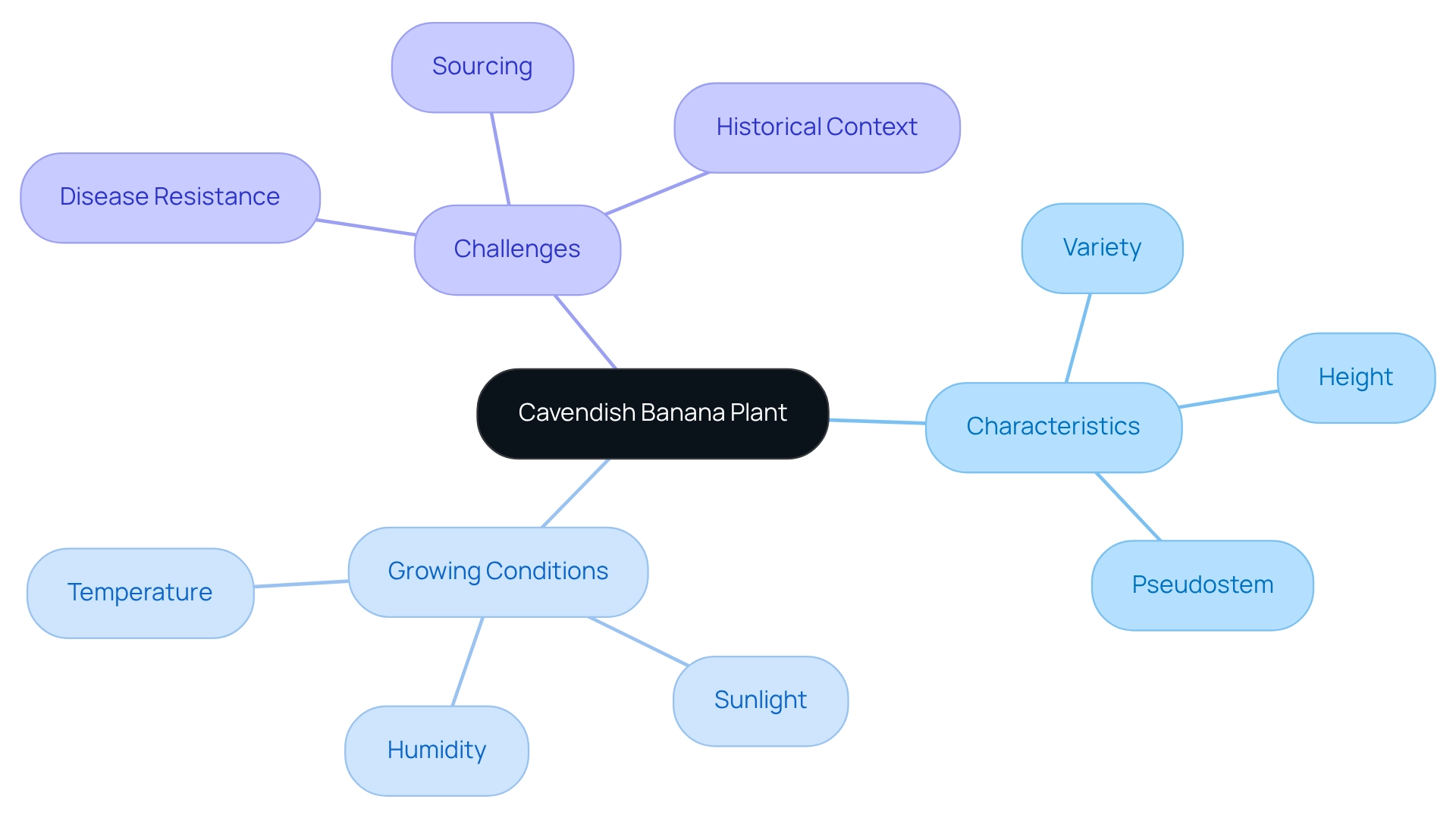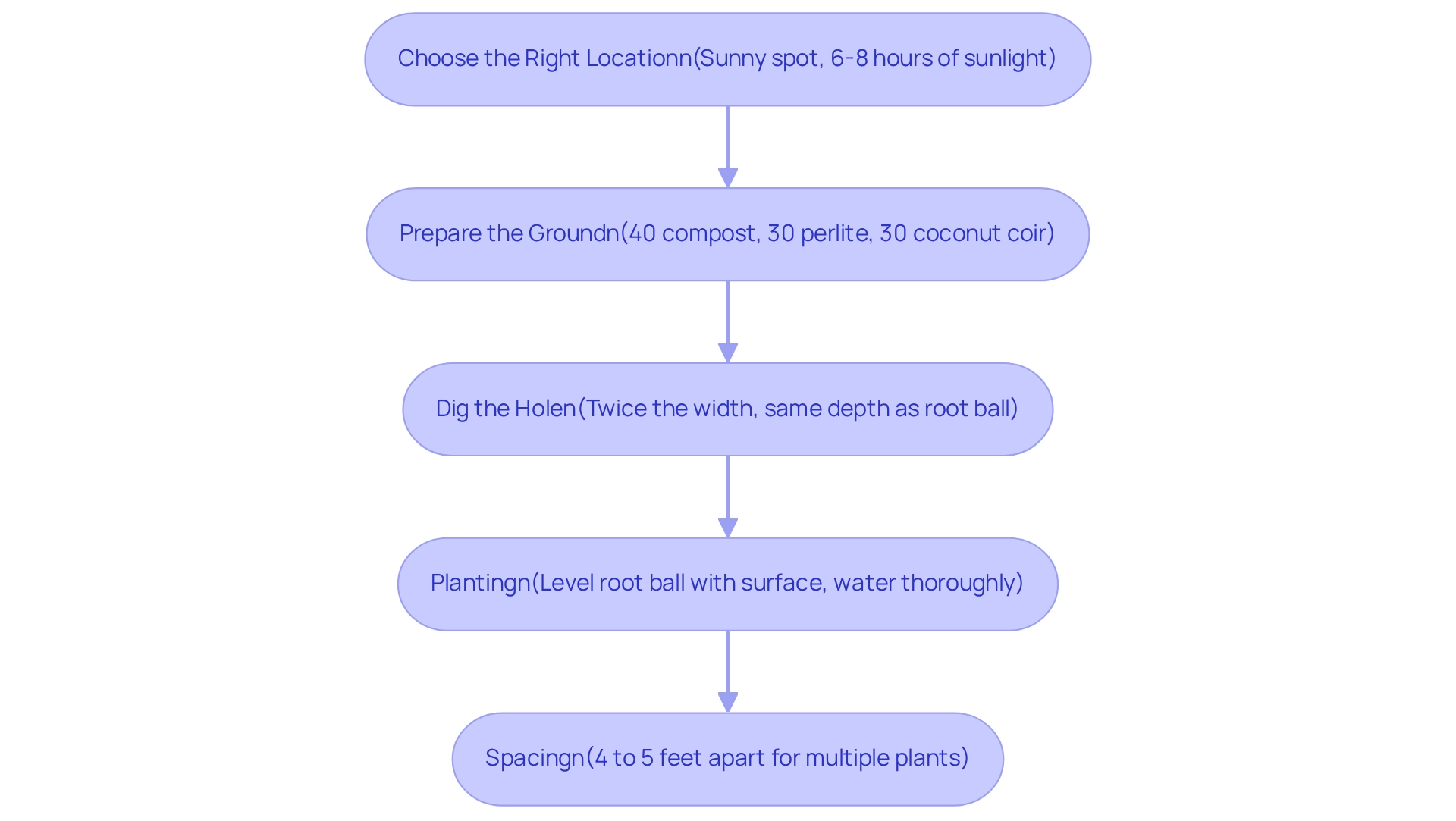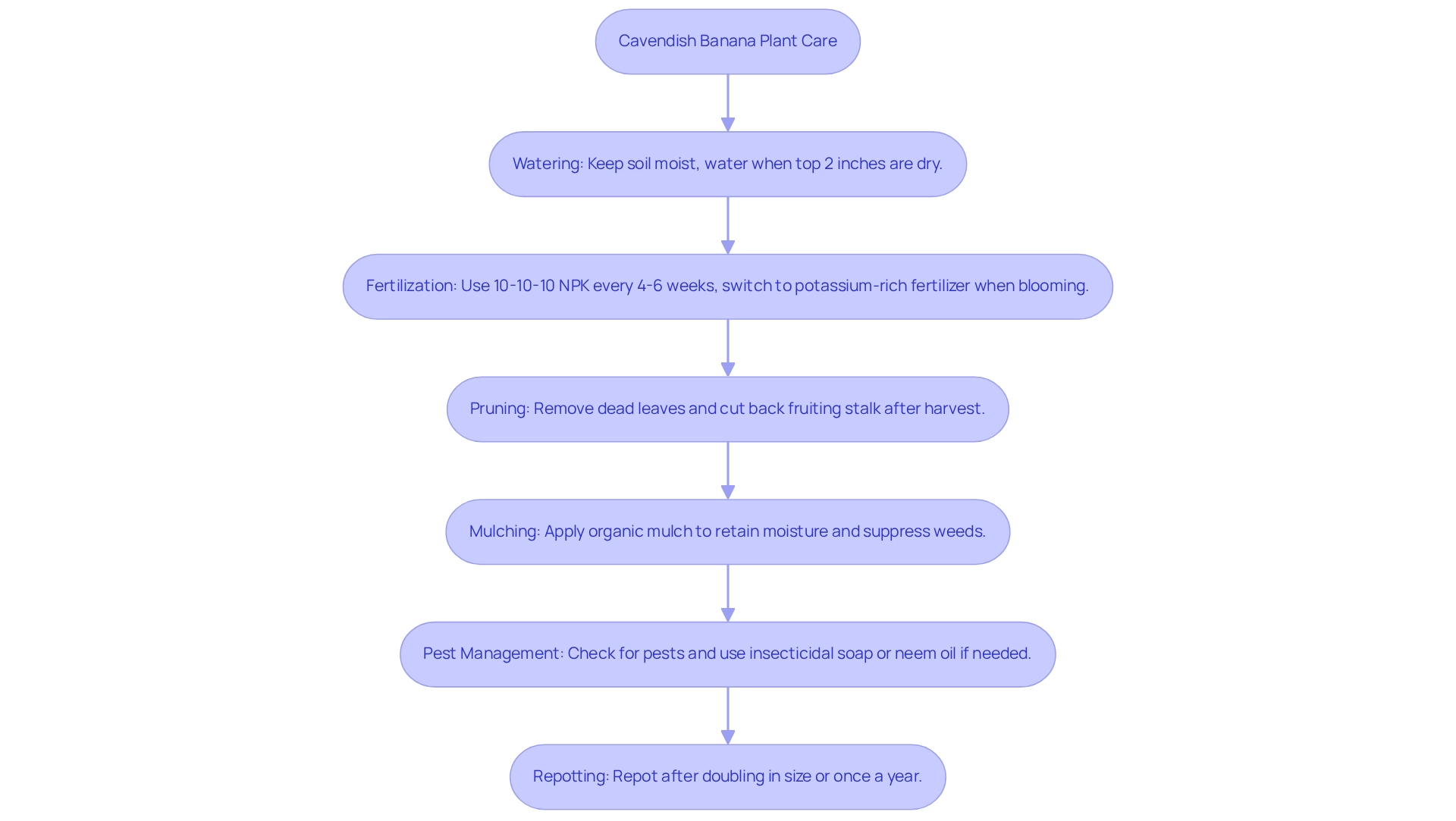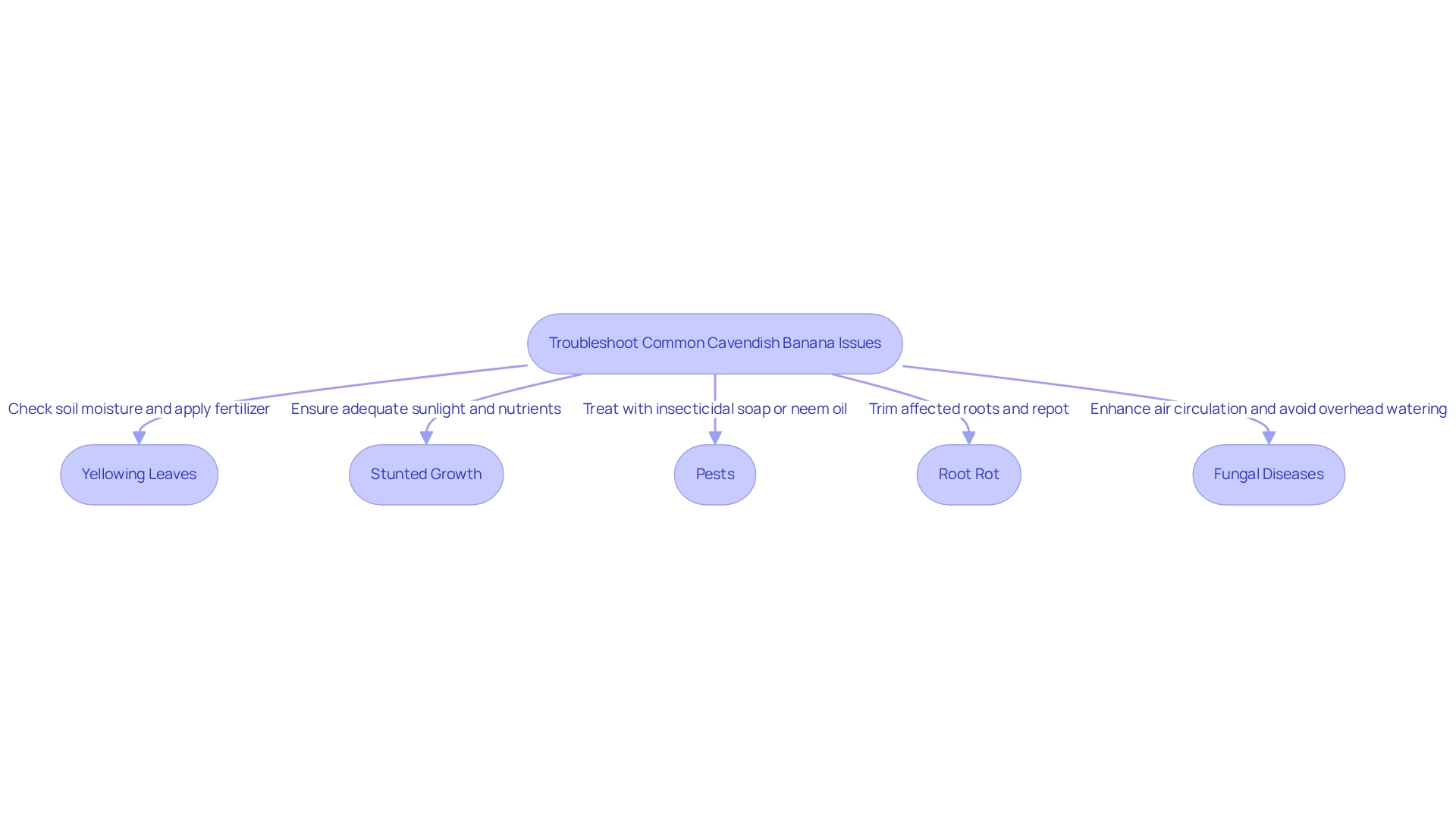
How to Grow and Care for Cavendish Banana Plant
Share
Ever dreamed of growing your own banana tree and harvesting sweet fruit right from your backyard? The Cavendish banana plant is a great place to start—it’s low-maintenance, fast-growing, and makes a bold, tropical statement in your garden or on your patio.
👉 Want to grow one at home? Get your Cavendish Dwarf Banana Plant from Everglades Farm
The Cavendish banana, a cherished staple in homes worldwide, is more than just a sweet, creamy fruit; it embodies a captivating journey of cultivation and care that can transform any garden into a tropical paradise. With its impressive height and lush foliage, this giant herb flourishes in warm, humid climates, making it an excellent choice for both seasoned gardeners and enthusiastic beginners.
Yet, the journey to successfully growing Cavendish bananas comes with its own set of challenges, particularly in light of recent threats from diseases like Fusarium Tropical Race 4. By understanding the essential growing conditions, proper planting techniques, and ongoing care requirements, we can unlock the secrets to nurturing these resilient plants.
This not only ensures a bountiful harvest but also contributes to the preservation of this vital cultivar in the face of adversity. Together, let’s embark on this rewarding gardening adventure!
Understand the Cavendish Banana Plant
The Musa acuminata 'Dwarf' is a beloved variety, cherished for its sweet, creamy fruit. This remarkable plant is classified as a giant herb, easily recognized by its pseudostem, which is formed from tightly packed leaf bases. Typically, it reaches a height of 8 to 10 feet, making it a wonderful choice for both garden beds and container planting. The cavendish banana plant flourishes in warm, humid climates, with ideal temperatures ranging from 75°F to 95°F (24°C to 35°C). It thrives best when basking in full sun, requiring at least 6 to 8 hours of direct sunlight each day. Understanding these characteristics is essential for creating the right growing conditions.
Recent discussions by the FAO Intergovernmental Group on Bananas and Tropical Fruits emphasize the importance of maintaining healthy production of this fruit, especially as Fusarium Tropical Race 4 (TR4) has been confirmed in 21 producing countries. This situation highlights the need for home gardeners to source their plants from reputable suppliers, ensuring they receive disease-free stock. Specialist Dr. Gert Kema warns that the current circumstances may echo the previous crisis faced by the Gros Michel variety, underscoring the significance of cultivating robust types.
With proper care, you can enjoy the many benefits of growing this delightful fruit, including its high yield and adaptability to warm climates. Successful cultivation examples demonstrate that, with the right conditions, these species can thrive, offering a bountiful harvest of delicious fruit. So, let’s nurture our gardens together and embrace the joy of cultivating this wonderful variety!

Plant Your Cavendish Banana Correctly
To successfully plant your cavendish banana plant, let's explore some nurturing steps together:
- Choose the Right Location: Seek out a sunny spot in your garden or a spacious container that basks in at least 6 to 8 hours of sunlight daily. This sunshine is vital for your banana's thriving growth.
- Prepare the Ground: Create a well-draining, nutrient-rich mixture that your plant will love. A recommended blend includes 40% compost, 30% perlite, and 30% coconut coir, with a pH that remains slightly acidic to neutral (5.5 to 7.0). It’s wise to test your soil first; if it’s too low in pH, adding lime can help, while sulfur can lower a high pH.
- Dig the Hole: Craft a hole that is twice the width and the same depth as the root ball of your fruit tree. This thoughtful preparation allows the roots of the cavendish banana plant to expand and establish themselves comfortably.
- Planting: Gently place the banana vegetation in the hole, ensuring the top of the root ball is level with the earth's surface. Fill in with soil and softly pat down to remove air pockets, fostering good contact with the roots. After planting the cavendish banana plant, give your new friend a thorough watering to help settle the soil around its roots. Remember, keeping the soil consistently moist is key, but be careful to avoid waterlogging, which can harm your plant.
- Spacing: If you’re planting multiple fruit trees, position them about 4 to 5 feet apart. This spacing allows their expansive leaves and roots to flourish, promoting healthy growth and airflow.
Incorporating organic matter into your soil can greatly enhance its structure and fertility, improving moisture retention and nutrient supply for your beloved fruit trees. After you’ve harvested, consider removing used pseudostems and using them as mulch to retain moisture and enrich the soil. For further guidance, feel free to explore the educational resources provided by Everglades Farm, which offer invaluable insights into growing tropical fruits.

Maintain and Care for Your Cavendish Banana
To nurture your Cavendish banana plant, let’s explore together some essential care guidelines.
- Watering: Keeping the soil consistently moist is crucial, especially during the growing season. Water thoroughly when the top 2 inches of soil feel dry. To make the most of your watering efforts, consider efficient irrigation practices, like regularly measuring soil moisture and using mulch to help retain that precious moisture. Remember, overwatering can lead to root rot, so stay mindful of your plant’s needs.
- Fertilization: A balanced fertilizer, such as 10-10-10 NPK, every 4 to 6 weeks during the growing season will support your plant’s healthy growth and fruit production. As your banana plant begins to bloom, it’s wise to reduce high-nitrogen fertilizers and switch to one rich in potassium to boost fruit growth. This tip comes from gardening specialist Amy Grant, who understands the nuances of plant care.
- Pruning: Removing any dead or damaged leaves is key to promoting airflow and reducing disease risks. After harvesting, don’t forget to cut back the fruiting stalk; this encourages new growth and ensures your plant continues to thrive.
- Mulching: Applying a layer of organic mulch around the base of your plant can help retain moisture and suppress weeds. Incorporating materials like coco coir and perlite will enhance soil drainage and aeration, which are vital for your banana plant’s well-being.
- Pest Management: Regularly check for pests like aphids and spider mites. If you spot any, using insecticidal soap or neem oil can help manage infestations effectively.
- Repotting: As your fruiting tree grows, repot it after it doubles in size or once a year, whichever comes first. This practice ensures continued healthy growth and vitality.
By following these nurturing guidelines, you can cultivate healthy banana plants that flourish and yield bountiful produce. Remember, gardening is a journey we embark on together, and your dedication will surely pay off!

Troubleshoot Common Cavendish Banana Issues
Here are some common issues you may encounter with the cavendish banana plant and how to address them:
-
Yellowing Leaves: This can indicate nutrient deficiency or overwatering. Check the soil moisture and consider applying a balanced fertilizer. Recognizing these symptoms early is crucial for sustaining the health of your plants, allowing them to flourish in your care.
-
Stunted Growth: Ensure your plant is receiving adequate sunlight and nutrients. If it feels too crowded, consider relocating it to a larger area. Remember, the revenue from banana cultivation represents around 75% of overall monthly household earnings for smallholder farmers. Robust crops are essential for economic stability, and your efforts can make a significant difference.
-
Pests: Look for signs of aphids or spider mites. Treat them with insecticidal soap or neem oil to eliminate these pests effectively. Taking swift action can protect your plants and help them thrive.
-
Root Rot: If your plant is wilting despite sufficient watering, check for root rot. Carefully remove it from the soil, trim away affected roots, and repot it in fresh, well-draining soil. This nurturing step can revive your plant and restore its vitality.
- Fungal Diseases: Keep an eye out for leaf spots or wilting. Enhance air circulation around your plant and avoid overhead watering to decrease humidity around the leaves. As Kiersten Rankel suggests, monitoring temperature and humidity levels is vital, as these factors greatly influence the health of your vegetation, including your Cavendish banana plants.
Addressing these common issues promptly can help maintain the health of your Cavendish banana plants, ensuring they thrive and produce fruit effectively. With proper care and attention, you can enjoy a bountiful harvest from your tropical garden. Remember, every step you take in nurturing your plants is a step toward creating a beautiful and fruitful environment.

🌱 Let’s Grow Something Tropical Together
Banana plants are fast-growing, beautiful, and rewarding. With the right conditions, you’ll be enjoying homegrown bananas in no time. Whether you're a seasoned gardener or just getting started, Everglades Farm is here to help with healthy plants, expert tips, and fast shipping.
👉 Ready to plant your own? Shop the Cavendish Dwarf Banana Plant now or explore or full Banana Trees Collection
Frequently Asked Questions
What is the Musa acuminata 'Dwarf'?
The Musa acuminata 'Dwarf' is a variety of banana plant known for its sweet, creamy fruit. It is classified as a giant herb and is recognized by its pseudostem, which is formed from tightly packed leaf bases.
How tall does the Musa acuminata 'Dwarf' typically grow?
This plant typically reaches a height of 8 to 10 feet, making it suitable for both garden beds and container planting.
What are the ideal growing conditions for the Musa acuminata 'Dwarf'?
The Musa acuminata 'Dwarf' flourishes in warm, humid climates with ideal temperatures ranging from 75°F to 95°F (24°C to 35°C). It thrives best in full sun, requiring at least 6 to 8 hours of direct sunlight each day.
Why is it important to source banana plants from reputable suppliers?
It is important to source banana plants from reputable suppliers to ensure they are disease-free, especially due to the threat of Fusarium Tropical Race 4 (TR4), which has been confirmed in 21 producing countries.
What challenges does the banana industry currently face?
The banana industry faces challenges from diseases like Fusarium Tropical Race 4 (TR4), which may lead to situations similar to the previous crisis faced by the Gros Michel variety. This emphasizes the need for cultivating robust types of banana plants.
What are the benefits of growing the Musa acuminata 'Dwarf'?
With proper care, growing the Musa acuminata 'Dwarf' offers high yields and adaptability to warm climates, allowing gardeners to enjoy a bountiful harvest of delicious fruit.



